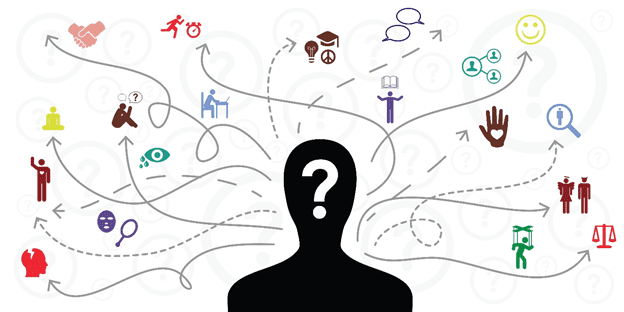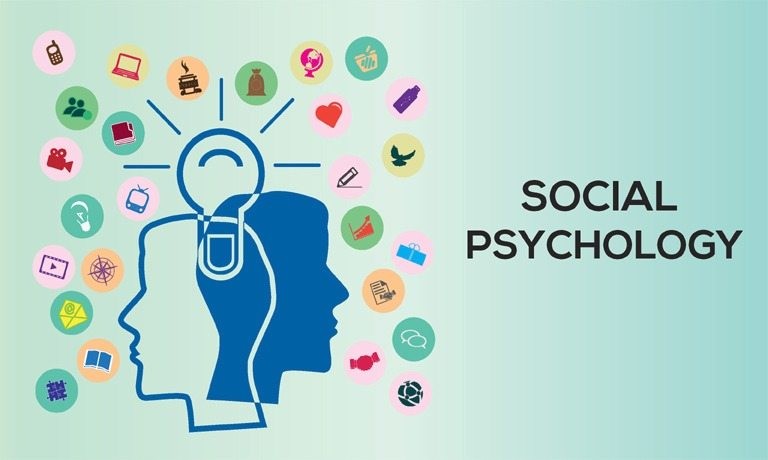Table of Contents

Introduction
Welcome to the fascinating realm of social psychology, a discipline that seeks to unravel the intricate tapestry of human behavior by examining the interplay between individuals and their environment. This blog post is dedicated to exploring the profound impact that various environmental factors have on our actions, thoughts, and emotions. We are not isolated beings; rather, we are deeply affected by the world around us. The environment, in its myriad forms, plays a significant role in shaping who we are and how we behave. The purpose of this article is to delve into the nuances of this relationship and to shed light on how we can harness environmental influences to foster positive change in ourselves and our communities.
Understanding Social Psychology
Social psychology is a branch of psychology that is concerned with understanding how people think about, influence, and relate to one another. It is the study of human behavior in social contexts, examining the ways in which individuals perceive, interact with, and are influenced by others. This field of inquiry is essential for grasping the complex dynamics that govern our social world, as it provides insights into the factors that drive our actions and the reactions of those around us. By comprehending these underlying processes, we can better navigate the social landscape and make informed decisions that promote harmony and growth.
The Role of the Environment in Social Psychology
The environment is a multifaceted concept that encompasses not only our physical surroundings but also the social and cultural contexts in which we live. Our environment is a dynamic interplay of various factors that can significantly affect our behavior. It is crucial to recognize that the environment is not a passive backdrop to our lives but an active participant in shaping our experiences and, by extension, our behavior.
The physical environment, social environment, and cultural environment are the three main domains of our environment that we will explore in this article. Each of these domains exerts its influence in distinct yet interrelated ways, contributing to the rich tapestry of human behavior.


The Physical Environment and Behavior
The physical environment is the tangible, visible aspect of our surroundings, including buildings, urban design, and natural landscapes. This environment has a profound impact on our mood, behavior, and overall well-being. Research has shown that exposure to natural settings can significantly improve mental health, reduce stress, and enhance cognitive functioning.
Consider the restorative power of green spaces. Urban parks, gardens, and other natural areas within cities have been linked to lower rates of mental illness, reduced stress levels, and increased happiness among residents. The presence of trees and other vegetation has been found to have a calming effect on individuals, leading to a decrease in aggressive behavior and a rise in prosocial actions. Moreover, natural environments can serve as a buffer against the negative consequences of urban living, such as noise pollution and high-density living.
On the other hand, crowded spaces can have the opposite effect. High population density and a lack of personal space can lead to increased stress and aggression. Studies have demonstrated that living in densely populated areas is associated with higher levels of anxiety and hostility. This is not to say that urban living is inherently detrimental; rather, it underscores the importance of designing urban spaces that incorporate elements of nature and provide adequate personal space for residents.
The Social Environment and Its Influence
The social environment refers to the web of relationships, interactions, and social structures that we navigate daily. It is within this environment that we learn from and are influenced by others, often in subtle and unconscious ways. Two key concepts in social psychology that pertain to the social environment are social learning theory and the interplay between situational and dispositional factors.
Social Learning Theory posits that we learn behaviors by observing and imitating others, especially those we perceive as similar to ourselves or as having higher status. This concept is exemplified in the work of Albert Bandura, who famously demonstrated the role of observational learning in his Bobo Dollar Experiment. Children who watched an adult model aggressive behavior towards an inflatable doll were more likely to exhibit similar aggressive actions themselves.
Situational factors refer to the external conditions or circumstances that can lead to particular behaviors, often overriding our innate dispositions. The Stanford Prison Experiment, conducted by Philip Zimbardo, is a chilling illustration of this principle. In this study, participants assigned to play the role of guards in a simulated prison environment quickly adopted cruel and authoritarian behaviors, regardless of their pre-existing personalities.
Dispositional factors, on the other hand, are the stable, internal characteristics that influence our behavior. However, social psychology teaches us that these traits are not immutable; they are expressed differently across various contexts and can be influenced by situational factors.


The Cultural Environment and Its Effects on Behavior
Cultural norms, values, and practices also play a pivotal role in shaping our behavior. The cultural environment is comprised of the shared beliefs, customs, and behaviors that define a society or group. It dictates what is considered appropriate or inappropriate, influencing our decision-making processes and the ways in which we express ourselves.(Social Psychology)
Individualism and collectivism are two cultural orientations that have a marked impact on behavior. In individualistic societies, the focus is on personal achievement and autonomy, often leading to a competitive streak and a tendency to prioritize one’s own needs over those of the group. In contrast, collectivist cultures emphasize the importance of social harmony and interdependence, fostering behaviors that prioritize group cohesion and the common good.(Social Psychology)
For example, the cultural dimension of individualism versus collectivism can influence how we approach decision-making. Individualistic societies may encourage independent decision-making, whereas collectivist societies may prioritize group consensus. Similarly, cultural norms can affect the expression of emotions. Some cultures encourage open displays of emotion, while others may favor more restrained expressions. Understanding these cultural nuances can help us appreciate the diversity of human behavior and communicate more effectively across cultural boundaries.(Social Psychology)
Case Studies and Research Findings
To further elucidate the impact of environmental influences on behavior, we shall examine some landmark studies and research findings:
The Stanford Prison Experiment, conducted in 1971, demonstrated the power of situational factors in shaping behavior. Participants were randomly assigned to the roles of prisoners or guards in a mock prison setting. The experiment had to be terminated early due to the extreme psychological distress experienced by participants and the alarming rate at which the guards assumed authoritarian roles, illustrating the significant influence of the environment on behavior.(Social Psychology)
The Bobo Dollar Experiment, mentioned earlier, showcased the role of social learning in behavior. By observing an adult model, children learned that aggression could be a means to an end, even when it conflicted with their innate tendencies.(Social Psychology)
Research on urban green spaces has revealed a consistent pattern of positive outcomes for mental health. These spaces encourage social interactions, physical activity, and a sense of community, all of which contribute to well-being. Moreover, they provide a respite from the stress of urban living, offering a calming oasis amidst the concrete jungle.(Social Psychology)
Practical Implications
The insights gained from social psychology can be applied in various domains to create environments that promote positive behavior and well-being:
In Education: Educators can design classrooms and learning spaces that are conducive to collaboration, creativity, and focus. By incorporating elements of nature and ensuring that class sizes are manageable, schools can create supportive environments that enhance student engagement and academic performance. Additionally, fostering a culture of social support among
and teachers can encourage positive behaviors and academic achievement.(Social Psychology)
In the Workplace: Employers can optimize workspaces to boost productivity and well-being. This might involve creating areas for social interaction, providing natural light, and offering opportunities for physical activity. Moreover, implementing policies that encourage work-life balance and support employee wellness can lead to happier, healthier, and more productive employees.
In Public Policy: Urban planners and policymakers can use social psychological principles to design cities that prioritize mental health. This could involve creating more green spaces, reducing traffic congestion, and promoting community engagement through the design of public spaces that encourage social interaction.(Social Psychology)


Strategies for Positive Environmental Influence
Now that we have a better understanding of how our environment shapes us, let us explore some strategies for creating environments that encourage positive behavior:
1. Foster Supportive Social Networks: Building strong social connections is vital for our well-being. Encourage community engagement by organizing neighborhood events, joining local groups, and supporting local businesses. These connections can provide a sense of belonging and reduce feelings of isolation.
2. Design Spaces for Interaction and Well-being: Whether at home, in the workplace, or in public spaces, design with the intention of enhancing social interactions and promoting mental and physical health. This might include creating communal areas, ensuring accessibility, and incorporating natural elements that induce relaxation.
3. Engage in Community Activities: Participating in activities that benefit the community, such as volunteering or joining a neighborhood watch, can strengthen social bonds and contribute to a safer, more cohesive environment.
4. Advocate for Urban Green Spaces: Support initiatives that bring nature into urban areas. This can involve advocating for the creation of new parks, community gardens, or green roofs. The presence of these spaces can significantly improve mental health outcomes for residents.
5. Challenge Negative Social Norms: Be aware of the unwritten rules that govern behavior in various contexts and actively work to challenge those that perpetuate harmful practices. By setting positive examples and advocating for change, we can help to shift cultural norms in a more beneficial direction.
Conclusion
In conclusion, our environment exerts a profound influence on our behavior, affecting us in ways both subtle and overt. By understanding the principles of social psychology and the various environmental factors that shape our actions, we are better equipped to create spaces and societies that support positive growth and well-being. Whether it is through the design of our cities, the cultivation of supportive social networks, or the implementation of enlightened policies, we have the power to shape our environment in ways that promote harmony and flourishing. It is our responsibility to leverage this knowledge to create a world that nurtures the best in humanity.(Social Psychology)